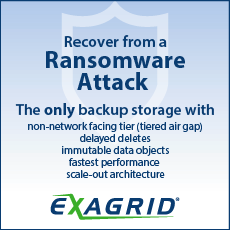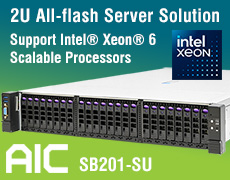Top 5 All-in-One DRaaS Solutions
From Acronis, Asigra, Druva, StorageCraft and Unitrends
This is a Press Release edited by StorageNewsletter.com on December 25, 2019 at 2:24 pm Report written by Jerome Wendt, president and founder, DCIG, LLC
Report written by Jerome Wendt, president and founder, DCIG, LLC
Top 5 All-in-One DRaaS Solutions
The New Need for DRaaS
DR-as-a-service (DRaaS) solutions represent the next step in the evolution of backup software. Existing backup software already equips many organizations to successfully backup their applications within prescribed backup windows.
Using this software, they may backup to disk, cloud, or tape or use snapshots and replication to protect data. These techniques have largely successfully solved long-standing backup challenges freeing organizations to focus on recovery.
Recovery presents an entirely new set of challenges for organizations to understand and address. They must achieve specific RTOs of minutes or hours for each application. They must define each application’s recovery point objective to determine how much, if any, data loss an application can sustain prior to recovery. Organizations must also determine where they want to recover, the applications they want to recover, and the order in which they want to recover them.
It is in response to this new organizational need for recovery that various DRaaS solutions have emerged. These DRaaS solutions equip organizations to simultaneously automate, accelerate, and simplify recovering their applications individually or at scale.
The Two Classifications of DRaaS Solutions
Providers deliver DRaaS solutions in two general forms-all-in-one (AIO) and hybrid DRaaS solutions.
• AIO DRaaS solutions. These include the core features for organizations to implement DRaaS in turnkey manner. This solution includes foundational technologies, services, and the support needed to implement DRaaS. The foundational technologies generally consist of physical or virtual backup appliances, backup software, and a purpose-built cloud offering. Backup-as-a-service (BaaS) offerings that offer AIO DRaaS functionality also now exist.
• Hybrid DRaaS solutions. These solutions consist of a cloud purpose-built for DR or a general-purpose cloud such as AWS. Providers then pair them with backup software from one or more providers with one of these types of clouds to deliver a hybrid DRaaS solution. Going down this path gives the providers more flexibility to create a hybrid DRaaS solution according to an organization’s specific needs.
SMBs will generally find that an AIO DRaaS solution will meet their DR needs. These organizations have simpler IT environments and can standardize on an AIO DRaaS solution. However, all organizations, regardless of their size, should take time to examine AIO DRaaS solutions. Due to their simplicity, if an organization can reasonably adopt one of these solutions, it behooves the organization to do so.
Inclusion and Evaluation Criteria for AIO DRaaS Solutions
In this report DCIG specifically focused on AIO DRaaS solutions that possessed the following characteristics.
These include:
• A physical or virtual backup appliance that may be installed in the customer environment with its own backup software; or, the offering is available as a purpose-built BaaS offering
• Provides its own cloud offering that is situated in a data center that can host a DR
• Pairs its backup solution with its cloud offering to create an AIO DRaaS solution
• The product is shipping and available by September 1, 2019
• Information available to make an informed, defensible decision
DCIG identified 11 different solutions that met these inclusion criteria.
It evaluated each of these solutions in the following areas:
• Pricing evaluates the features included as part of the subscription, the different subscription periods available, and the events and services the solution includes with each subscription.
• Orchestration evaluates the types of services that a provider offers for recovery, such as runbooks and testing; the types of recoveries supported; and, the types of cloud infrastructure the provider makes available to host the recovery.
• Protected environments evaluate the types of applications, data, hypervisors, and OSs protected on-premises or in a general-purpose cloud by the provider’s backup software.
• DR testing evaluates the DR testing options available; the maximum duration of DR tests that a provider supports; and, the number of virtual and/or physical hosts that a provider can recover in their cloud.
• Recovery looks at the SLAs that a provider offers for recovery times; who determines if a recovery should occur; and, the levels of availability and redundancy that the provider’s cloud offers during a recovery.
• Cloud choice examines the industry certifications the provider’s cloud satisfies and the countries or continents where its data centers are located.
• Support evaluates the individuals that provide the support; the timeliness of their response; and, the ways in which each provider responds to multi-DR recovery scenarios.
Similarities between the Top 5 AIO DRaaS Solutions
All Top 5 AIO DRaaS solutions have the following characteristics in common:
• All-inclusive pricing. Each provider includes a backup appliance (virtual or physical), backup software, cloud compute, cloud storage, DR testing, and DR as part of its subscription pricing. If a BaaS provider, it offers its BaaS offering in lieu of a backup appliance and software.
• DR testing. All include multiple DR tests and live DRs with a subscription to their offering. In their DR testing, they all include a DR runbook, quarterly DR testing, and annual updates to their DR plan as well as the option for organizations to perform DR tests themselves. Organizations may conduct DR tests for as short as a day to over 30 days if they choose.
• Cloud infrastructure. All offer a shared cloud infrastructure to host DR testing and live DR that can do both partial and full recoveries in a highly available data center. All have cloud data centers located in Australia, Canada, Europe, Great Britain and USA.
• Physical and virtual application protection. All protect applications running on Linux and Windows OSs as well as the Hyper-V and vSphere hypervisors. All providers also provide integrated protection for Microsoft applications as well as Windows and Linux file servers.
• Recovery. All Top 5 AIO DRaaS providers can support over 100 VMs in their cloud as part of a recovery. Organizations can also host their DRs for an indefinite period with the provider, though they may incur costs at some point after 30 days.
• Support. Each Top 5 provider provides immediate support (15mn or less) in the event of a DR and each can concurrently support multiple DR scenarios (over 10).
Differentiators between the Top 5 AIO DRaaS Solutions
All Top 5 AIO DRaaS solutions differ in the following areas in regard to their respective offerings:
• Subscription price variables. Top 5 AIO DRaaS providers take different variables into account when they determine the subscription price. Many count the number of VMs and physical machines they need to protect along with the amount of on-premises data. This impacts the size of the backup appliance they deploy and the subsequent price of their DRaaS deployment. Many also calculate how much data the organization will store in their cloud in determining the monthly subscription price.
• VDI recoveries. Organizations that need to recover their existing production VDI deployment during a DR need to verify their DRaaS provider supports recovery for VDI.
• Breadth of OS and application support. Organizations that run any applications on anything other than Linux or Windows and want to use the AIO DRaaS solution to recover them need to verify the AIO DRaaS solution can backup and recover it.
• Cloud-based apps. Each AIO DRaaS solution offers varying levels of support for cloud-based applications. While they all backup Google G-suite and Microsoft Office 365, they differ in their levels of support for other common cloud-based applications such as Dropbox and Salesforce.
• Managed recovery services. Rather than an organization having to conduct a DR itself, it can call on the provider to perform the DR on its behalf.
• Timeliness and location of recovery. Prior to selecting any AIO DRaaS provider, an organization should establish how quickly it wants to recover. Some AIO DRaaS providers offer near real-time recovery SLAs while others only provide best faith effort recovery time SLAs. Organizations should also verify that if they need to recover in a specific geographic location that the AIO DRaaS provider has a data center in that region that can host the recovery.
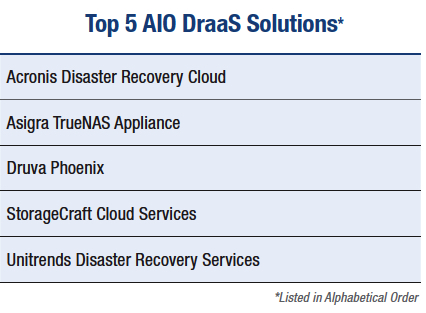
Top 5 AIO DRaaS Solution Profiles
Acronis DR Cloud
Acronis uses the following products in its portfolio as the building blocks for its DR Cloud solution.
• Acronis Active Protection
• Acronis Backup
• Acronis Cloud Storage
• Acronis Cyber Cloud for Enterprise
• Acronis Local Cloud Appliance
• Acronis Notary
• Acronis DR Service
DR Cloud represents the outcome of multiple acquisitions coupled with product innovation and integration by Acronis over many years.
Key technologies that Acronis offers that differentiate it from other Top 5 AIO DRaaS offerings include:
• Block-chain authentication. Acronis uses blockchain technology in its Notary offering. Notary uses a distributed database, or a blockchain, across a decentralized system to prevent data tampering. As it stores data, it also creates a cryptographic hash unique to each file. Using Notary, organizations can verify their data’s authenticity and security.
• Built-in AI-based anti-ransomware technology. Acronis utilizes its Active Protection software to constantly monitor and scan data files in an organization’s systems. As it scans these files, its AI feature detects and identifies suspicious patterns of behavior. Using this feature, it may identify known as well as unreported strains of ransomware. Should ransomware begin to encrypt files, Acronis takes action to detect and halt this process.
• Protects iOS and Android mobile devices. Using Acronis organizations may centrally protect and recover the data residing on mobile devices along with their other data.
The Acronis DR Service solution epitomizes what small and midsize organizations expect an AIO DRaaS solution to deliver. It brings together an on-premises backup appliance, backup software, and a private cloud to create a turnkey DRaaS solution. Equally important, Acronis addresses key new challenges such as ransomware and protecting data on mobile devices. Including these features makes it practical for organizations to potentially adopt Acronis as their sole backup and recovery solution.
Asigra TrueNAS Appliance
The TrueNAS Appliance delivers the robust backup capabilities of its Cloud Backup software on iXsystems’ scalable TrueNAS storage system. Built on the TrueNAS M-Series line, this DRaaS solution offers organization up to 10PB of on-premises capacity. In this configuration, the Asigra TrueNAS Appliance can potentially address the backup and recovery capacity requirements of SMBs and enterprise environments.
Other technologies that the TrueNAS Appliance offers that help to differentiate it from other DRaaS solutions include:
• Agent-less backup. Asigra represents one of the earliest providers of agent-less backup technology. It continues to provide agent-less backup for applications running in physical, virtual, and cloud environments. Organizations can unobtrusively deploy Asigra across their enterprise regardless of the platform that their applications use.
• Bidirectional malware detection. Asigra provides one of the leading means to detect malware and ransomware in corporate backups. It includes antivirus software as part of its Cloud Backup software. This antivirus software scans backups as it backups data to detect and alert should any ransomware reside in the data. It also scans recovered data to look for malware strains that have been identified since the time of the original backup.
• File and object storage target. Enterprises may find it difficult to replace their existing backup software with a new one, even when they need DRaaS. The TrueNAS Appliance helps to address this challenge. Organizations can point their existing backup software and use the TrueNAS Appliance as a backup target. It offers both NAS and object-based storage interfaces that any modern backup software can use as a backup target. Storing backups on the TrueNAS Appliances ensures that the data gets move offsite for recovery.
The TrueNAS Appliance differentiates itself in an important way for other DRaaS offerings: it ships on an enterprise storage system. This approach offers organizations an appliance that contains the availability, reliability, and scalability for which iXsystems’ storage systems are known. This approach keeps Asigra focused on its core competency of backup and DRaaS enablement for MSPs while iXsystems remains true to its focus on storage.
Druva Phoenix
Druva Phoenix represents the only AIO DRaaS solution hosted in the Amazon Web Services (AWS) cloud. Druva Phoenix functions as a backup-as-a-service (BaaS). Organizations pay a monthly fee for backup.
Organizations get charged based upon the total amount of storage capacity they use in the AWS cloud. Using a cloud-based architecture differentiates Druva Phoenix from other AIO DRaaS offerings in the following ways:
• Access to on-demand hardware resources. Druva addresses one of the key challenges of on-premises DRaaS solutions. When organizations acquire on-premises hardware, they must acquire sufficient resources to meet peak demands. These peak demands often represent 10% or less of the hardware’s actual requirements. Since Druva runs in the AWS cloud, it can access AWS’s essentially limitless compute or storage resources during times of peak demand. Further, Druva makes these resources available at no extra charge since it only bills for storage capacity used in the cloud.
• No waiting period to get started. Druva also addresses the wait time associated with on-premises solutions. Organizations must normally first size backup appliances and then configure the backup
appliances and software before deploying them on-premises. Since Druva is a BaaS offering, organizations only need to create an account in Druva prior to using it and start backing up data.
• No egress fees to retrieve data from the cloud. Organizations sometimes cite the cost of retrieving data from the cloud (egress fees) as a potential barrier to using AWS. Druva addresses that concern. It absorbs all egress fees associated with data recovery.
Unlike the other offerings, Druva uses a public cloud (AWS) rather than its own private cloud to deliver its AIO DRaaS offering. However, it manages the AWS cloud in such a way that it abstracts away AWS’s management complexity. In so doing, the AWS cloud appears and functions as a private cloud to organizations that use Druva’s offering. This provides organizations the simplicity of a private cloud for backup and the scalability of a public cloud for recovery-DR or otherwise.
StorageCraft Cloud Services
StorageCraft delivers its AIO DRaaS solution using a combination of its OneXafe, ShadowXafe, ShadowProtect, and StorageCraft Cloud offerings.
StorageCraft Cloud Services differentiates itself from the other Top 5 AIO DRaaS solutions in the following ways:
• All-inclusive software licensing by node. DRaaS providers often use capacity-based software licensing. The more data they store, the more they pay on a monthly basis. StorageCraft licenses its software per node. Once licensed, they can potentially scale up to 200TB of capacity in a single node without incurring any new software licensing fees.
• Start small and grow through incremental addition of storage capacity. All backup appliances that organizations deploy on-premises ship with a minimum amount of storage capacity. This “minimum” amount of storage capacity may substantially exceed what an organization needs at that location. StorageCraft gives organizations the flexibility to deploy very small amounts of storage capacity to more precisely match their requirements. As their requirements grow, or if they grow, they can add capacity at a granular level.
• VirtualBoot Technology. Many disaster recoveries are fairly small in nature-often requiring only the recovery of a single application. VirtualBoot Technology facilitates these granular recoveries. Organizations can boot the application from the OneXafe appliance using VirtualBoot. Once running, it transparently migrates data the data from the OneXafe appliance to the production storage without application disruption or downtime.
The various configurations options that StorageCraft offers coupled with its flexible licensing scheme provides organizations with multiple ways to successfully kick start their DRaaS strategy. Organizations can start with OneXafe, its converged scale-out storage system, either as a storage target for their existing backup software or as a file server. Alternatively, they can choose its ShadowXafe backup appliance that includes its ShadowProtect backup software hosted on its OneXafe storage appliance.
Unitrends DR Services
Unitrends integrates its portfolio of enterprise backup software, backup appliances, and private cloud to deliver its DR Services solution. Due to the maturity of its offering, Unitrends has built a number of reporting and services offerings that run atop of its AIO DRaaS solution.
Unitrends DR Services differentiates itself from the other Top 5 DRaaS offerings in the following ways:
• Built-in reporting. It is one thing for the IT staff to know that the AIO DRaaS solution works and meets corporate service agreements (SLAs). It is quite another to convince auditors and management teams that it meets them. Using Unitrends built-in reporting tools, organizations can document and prove to internal stakeholders, customers, and auditors that their DRaaS solution meets their SLAs and compliance requirements.
• Policy-driven, AI-infused backup and recovery management. Everything related to backup and recovery constantly changes in enterprises. This includes: the amount of data in each backup job, each backup job’s window, its time to recovery, how quickly it needs to recover, the order in which to recover it, and which compliance regulations it must satisfy, among many others. To track these variables and automatically adjust to them, organizations need intelligence built into their DRaaS solution. Using Unitrends, organizations first set policies for their data. Unitrends then takes those policies and automatically sets up and dynamically adjusts backup jobs and recovery routines based upon them.
• Offers Recovery Assurance. All the solutions included in the Top 5 offer some means to do DR testing. Unitrends takes DR testing one step further by providing Recovery Assurance. This feature analyzes the results of each DR test and helps organizations pinpoint where recovery issues reside-whether that is on-premises or in the Unitrends cloud.
Unitrends DR Services certainly checks all the boxes when it comes to providing an AIO DRaaS solution. Yet perhaps more importantly, it checks all the boxes when it comes to delivering the extra services and features that organizations want to have a high degree of confidence that their AIO DRaaS solution works as expected.
DCIG Disclosures
Vendors of some of the solutions covered in this DCIG Top 5 report are or have been DCIG clients. This is not to imply that their solution was given preferential treatment in this report.
In that vein, there are some important facts to keep in mind when considering the information contained in this Top 5 report and its merit.
• No vendor paid DCIG any fee to research this topic or arrive at predetermined conclusions.
• The firm did not guarantee any vendor that its solution would be included in this Top 5 report.
• It did not imply or guarantee that a specific solution would receive a Top 5 designation.
• All research is based upon publicly available information, information provided by the vendor, and/or the expertise of those evaluating the information. DCIG conducted no hands-on product testing to validate how or if the features worked as described.
• No negative inferences should be drawn vs. any vendor or product not covered in this Top 5 report.
• It is a misuse of this Top 5 report to compare products included in it vs. solutions not included in it.
DCIG wants to emphasize that no vendor was privy to how it weighed individual features. In every case the vendor only found out the rankings of its solution after the analysis was complete.
To arrive at the Top 5 solutions included in this report, DCIG went through an seven-step process to come to the most objective conclusions possible.
• It established which features would be evaluated.
• The features were grouped into 7 general categories.
• An analyst internally examined the feature data for each product and completed a survey for it based upon the analyst’s own knowledge of the product and publicly available information.
• It identified solutions that met its definition for an AIO DRaaS solution.
• It weighted each feature to establish a scoring rubric.
Each solution was ranked based on information gathered in the surveys.
• Products was ranked using standard scoring techniques.





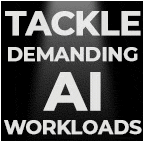
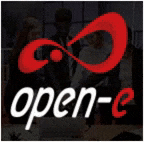






 Subscribe to our free daily newsletter
Subscribe to our free daily newsletter
